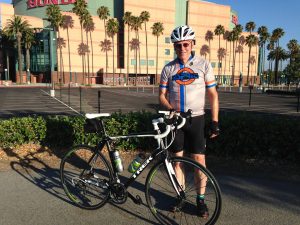 Those of you who know me know I love biking. Recently I was riding my bike on a nice large street. It wasn’t even crowded. So I was shocked when a pickup truck passed me 25 feet before an intersection and proceeded to turn right directly in front of me.
Those of you who know me know I love biking. Recently I was riding my bike on a nice large street. It wasn’t even crowded. So I was shocked when a pickup truck passed me 25 feet before an intersection and proceeded to turn right directly in front of me.
I started yelling, “Whoa! Whoa!”—the biker’s equivalent of honking. Meanwhile I was looking around to see where I wanted to go since continuing on straight at my current speed would have resulted in a crash. Was there room for me to turn right along with the truck? At the same time, I was hitting the brakes to try to slow down. Yelling, changing course, and braking all at the same time.
I managed to pull over as the truck started going up a hill. My first thought was that I wanted to talk to the driver about it, but I decided eye contact was sufficient: he at least saw—after the fact—that he had nearly killed me. After he passed, I checked the heart monitor that I always wear while biking, and was surprised to find that it hadn’t gone up. My heart rate had stayed level.
I reflected on that experience for a while. That night I was facilitating my anger management class at the Salvation Army, and I spent about 10 minutes sharing that experience and what I had learned. One thing I recognized was that the feeling of anger comes when something isn’t right. A boundary has been crossed. Someone (in this case a pickup truck) was taking over my rightful space.
Yet in this situation, that feeling of anger—and the adrenaline that went with it—was completed focused on channeling that energy toward solutions. I was yelling to warn the driver causing the danger. I was braking. I was scanning for where I could go. I was slowing down enough to navigate that corner.
Because I stayed calm, I could focus that energy toward solutions. Had I had a more typical response—getting mad at the driver—that would have taken time and energy away from the solution… and the probability of striking the truck would have gone up dramatically. We may feel the anger, but it’s far better to take that emotion and focus it 100% toward solutions.

As usual, terrific insights Bob! The life of a cyclist is indeed one of perpetually focused anger!
I can surely relate to the cycling story. What a great take-away in learning how to focus anger in productive ways. Thanks for sharing.